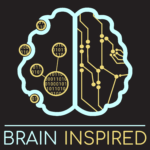
Support the show to get full episodes, full archive, and join the Discord community.

The Transmitter is an online publication that aims to deliver useful information, insights and tools to build bridges across neuroscience and advance research. Visit thetransmitter.org to explore the latest neuroscience news and perspectives, written by journalists and scientists.
Read more about our partnership.
Sign up for Brain Inspired email alerts to be notified every time a new Brain Inspired episode is released.
To explore more neuroscience news and perspectives, visit thetransmitter.org.
Rony Hirschhorn, Alex Lepauvre, and Oscar Ferrante are three of many many scientists that comprise the COGITATE group. COGITATE is an adversarial collaboration project to test theories of consciousness in humans, in this case testing the integrated information theory of consciousness and the global neuronal workspace theory of consciousness. I said it’s an adversarial collaboration, so what does that mean. It’s adversarial in that two theories of consciousness are being pitted against each other. It’s a collaboration in that the proponents of the two theories had to agree on what experiments could be performed that could possibly falsify the claims of either theory. The group has just published the results of the first round of experiments in a paper titled Adversarial testing of global neuronal workspace and integrated information theories of consciousness, and this is what Rony, Alex, and Oscar discuss with me today.
The short summary is that they used a simple task and measured brain activity with three different methods: EEG, MEG, and fMRI, and made predictions about where in the brain correlates of consciousness should be, how that activity should be maintained over time, and what kind of functional connectivity patterns should be present between brain regions. The take home is a mixed bag, with neither theory being fully falsified, but with a ton of data and results for the world to ponder and build on, to hopefully continue to refine and develop theoretical accounts of how brains and consciousness are related.
So we discuss the project itself, many of the challenges they faced, their experiences and reflections working on it and on coming together as a team, the nature of working on an adversarial collaboration, when so much is at stake for the proponents of each theory, and, as you heard last episode with Dean Buonomano, when one of the theories, IIT, is surrounded by a bit of controversy itself regarding whether it should even be considered a scientific theory.
- COGITATE.
- Oscar Ferrante. @ferrante_oscar
- Rony Hirschhorn. @RonyHirsch
- Alex Lepauvre. @LepauvreAlex
- Paper: Adversarial testing of global neuronal workspace and integrated information theories of consciousness.
- BI 210 Dean Buonomano: Consciousness, Time, and Organotypic Dynamics
0:00 – Intro
4:00 – COGITATE
17:42 – How the experiments were developed
32:37 – How data was collected and analyzed
41:24 – Prediction 1: Where is consciousness?
47:51 – The experimental task
1:00:14 – Prediction 2: Duration of consciousness-related activity
1:18:37 – Prediction 3: Inter-areal communication
1:28:28 – Big picture of the results
1:44:25 – Moving forward